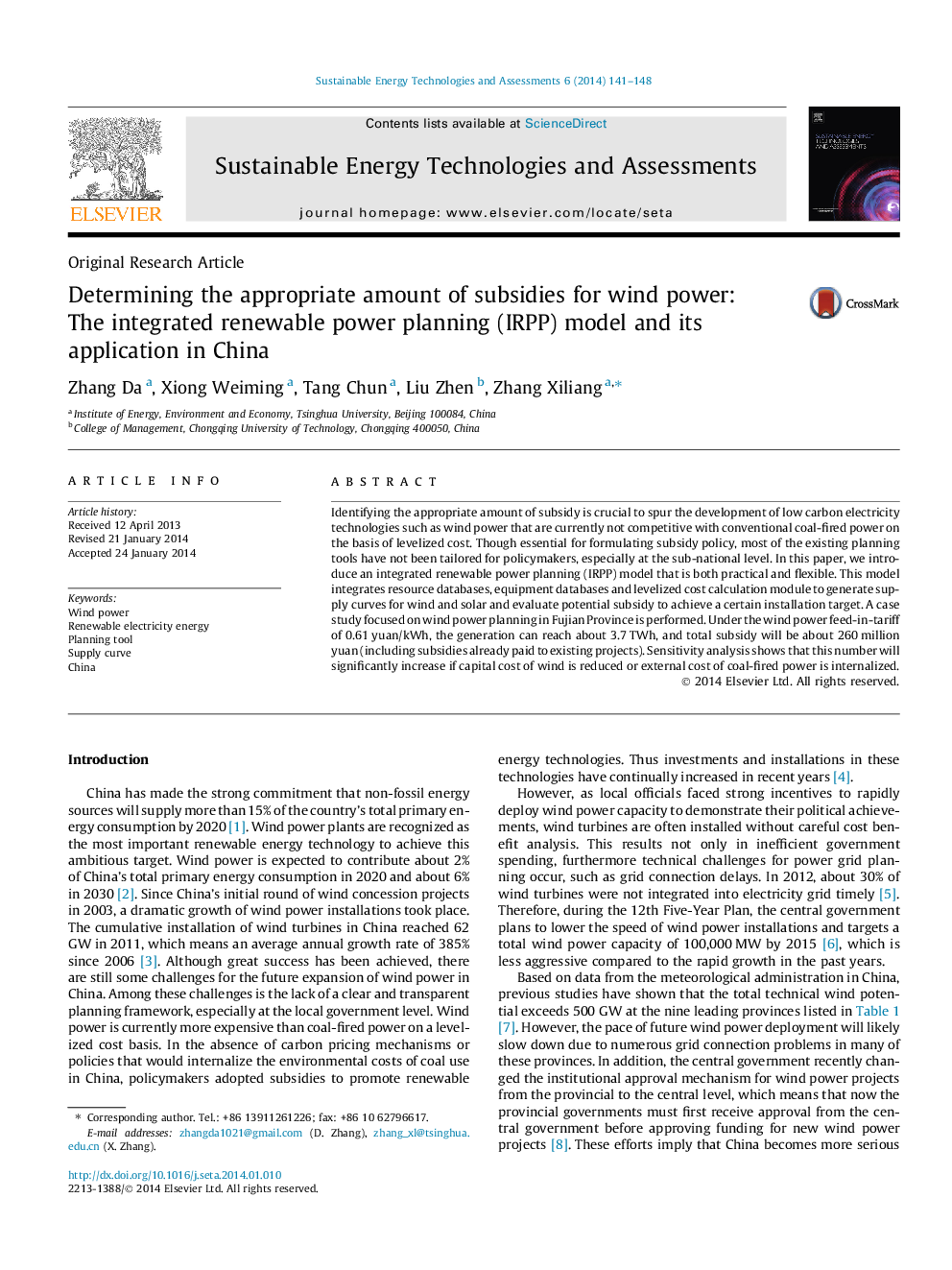| Article ID | Journal | Published Year | Pages | File Type |
|---|---|---|---|---|
| 1752717 | Sustainable Energy Technologies and Assessments | 2014 | 8 Pages |
Identifying the appropriate amount of subsidy is crucial to spur the development of low carbon electricity technologies such as wind power that are currently not competitive with conventional coal-fired power on the basis of levelized cost. Though essential for formulating subsidy policy, most of the existing planning tools have not been tailored for policymakers, especially at the sub-national level. In this paper, we introduce an integrated renewable power planning (IRPP) model that is both practical and flexible. This model integrates resource databases, equipment databases and levelized cost calculation module to generate supply curves for wind and solar and evaluate potential subsidy to achieve a certain installation target. A case study focused on wind power planning in Fujian Province is performed. Under the wind power feed-in-tariff of 0.61 yuan/kWh, the generation can reach about 3.7 TWh, and total subsidy will be about 260 million yuan (including subsidies already paid to existing projects). Sensitivity analysis shows that this number will significantly increase if capital cost of wind is reduced or external cost of coal-fired power is internalized.
